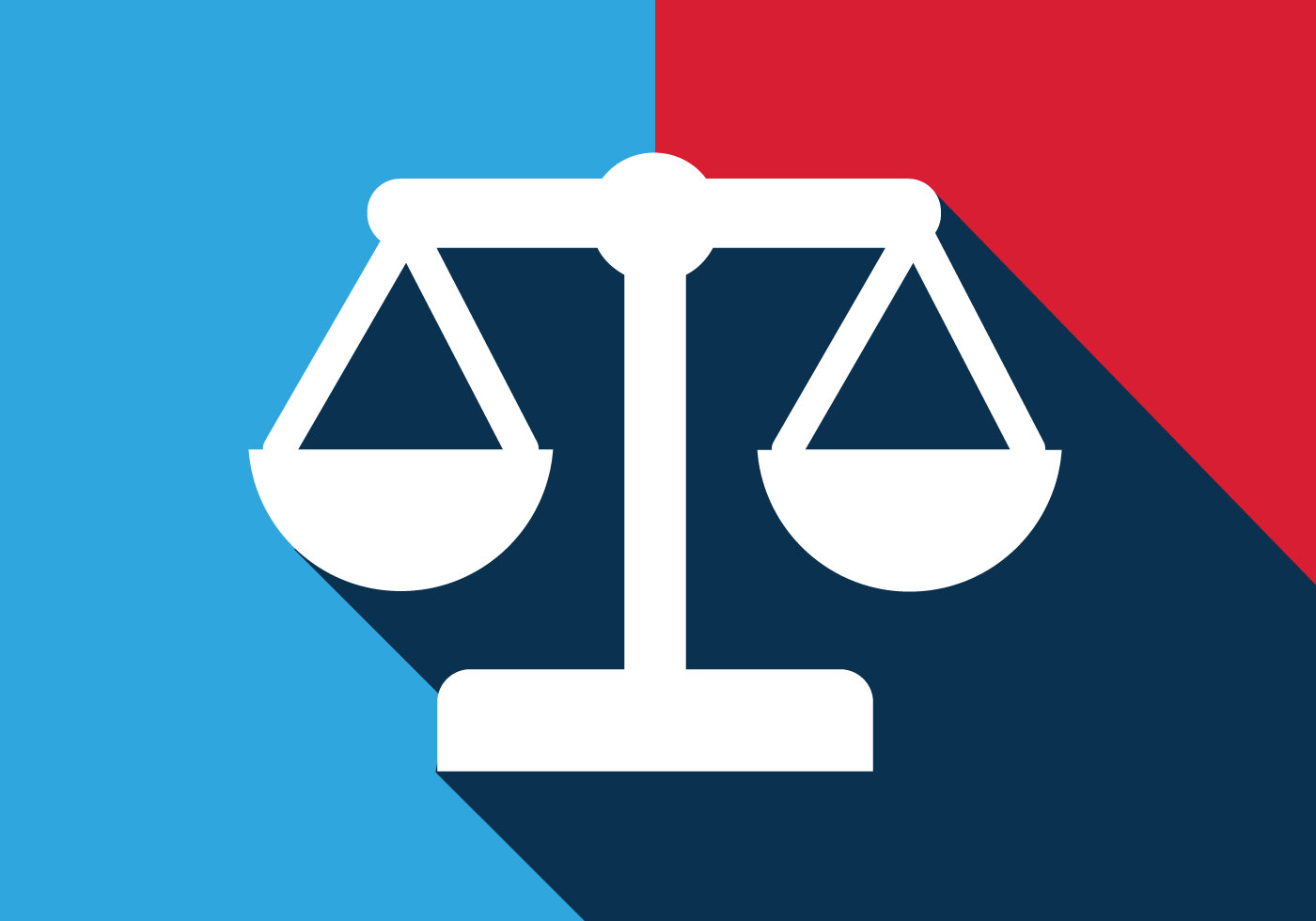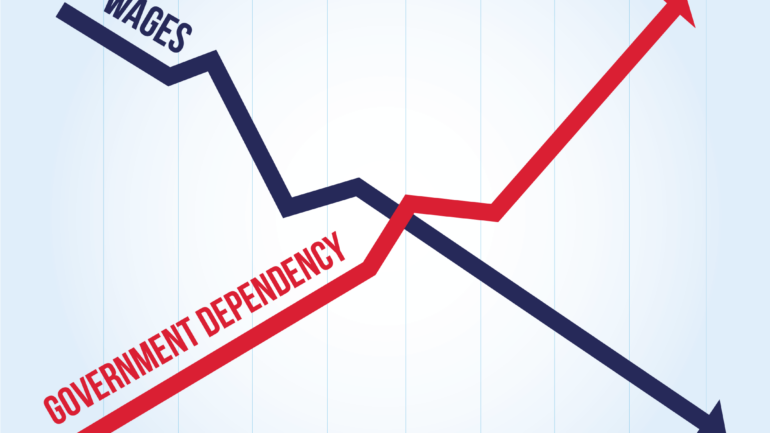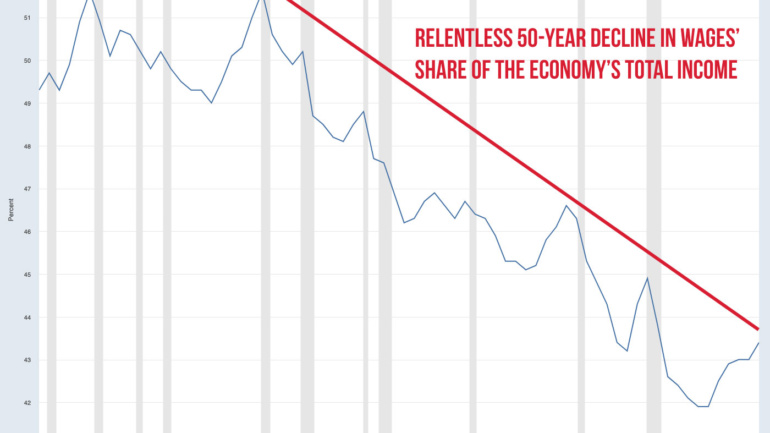The Equal Tax Amendment
Guiding Principles of Taxation—To Amend and Replace Amendment 16 of the Constitution with the Equal Tax Amendment.
The sixteenth amendment to the constitution was ratified on February 3, 1913 which allowed the
federal government to begin collecting taxes on income. Originally tax rates were only a few percent and applied just to wealthy thereby excluding the majority of the working class. Since then, the tax code has become a labyrinth of codes and rules. Unchecked political favoritism wielded by politicians creates preferred tax rates and exemptions for wealthy while regressively burdening the working class. The two greatest examples are the hidden taxation of social security/Medicare and the classification of income between earned and passive that allows wealthy to minimize taxation while unfairly burdening the working class.
Summary
This proposal has three main areas to correct and modify the principles of taxation to benefit the
working class. These go far beyond a simple flat tax scenario as it describes in depth and encodes these principles into the constitution to prevent future tampering by elected representatives.
- Equality of taxation must be applied to all citizen and forms of businesses without exception. Elected official cannot modify, exempt, reward or punish individuals or organizations. One tax rate will be determined and applied. Representatives can provide exemptions such as a floor on the first level of income but the exemption must be reasonably available to all taxpayers.
- Establishes protection from involuntary servitude as right of the people by establishing a maximum cap of 50% of earnings on the amount of tax the government can collect and flattens the power curve by requiring allocation of taxes between federal, state and local.
- Provides against unfair confiscation of people’s assets by invoking the principle of previously taxed income.
1. Principle of Equality of Taxation Shall be Applied
A guiding principle of equality under the law shall be that the burden of taxation should fall reasonably in relatable proportions to income upon the public and that all rules and exceptions must abide by this. Therefore, taxation of income and offsets in the form of deductions and credits in all forms and names, must apply equally or be reasonably available and utilizable by all members of the public including individuals and entities of business and organization and regardless of status.
There will be no difference between the tax rate on income between a corporation and an individual nor a difference between any type of business entity. There will be no difference in type of income whether it be passive from investments or from work provided. There will be no differences in exemptions of income whether it be first earnings or other deductions unless otherwise available to all type of entities.
2. Principle of Freedom from Servitude and Extortion by Taxation
That the definition of freedom is that no person shall be required to contribute greater than 50% of their efforts and income towards the support of its government and societal programs otherwise it is deemed involuntary servitude and is protected against herein by amendment to the constitution. Therefore taxation in all forms and names may not exceed the 50% threshold in order to preserve the rights of freedom of individuals and to prevent involuntary servitude to the state. The allocation of taxation will be apportioned to properly allow for the division and responsibilities of government within this threshold split between the Federal and the other half to be apportioned to State and local governments in a manner determined by the people of each state. Therefore, the maximum taxation in all forms and names that can be collected will not exceed 25% for Federal and 25% combined for State and local governments. This shall apply to all entities of organization including individuals and forms of business.
Taxation shall be deemed to be a burden that is to be reasonably borne by the public eligible to vote for representation that will determine revenue obtained through it. Therefore, all methods and
determinations used to generate taxes must be borne in part by estimate of at least two thirds of the public eligible to vote. This will prevent extortion by democracy that could allow 51% of the public to unfairly take from the minority 49%.
Congress shall make no laws or take actions that violate the rights to protection from involuntary
servitude or extortion by taxation.
3. Principle of Previously Taxed Income
All assets including savings and investment derived from income previously subject to tax will be forever free from secondary taxation excluding sales taxes and property improvement taxes.
An unjust method of income taxation is to use double taxation to confiscate existing property and
savings of citizens.
A free person should and shall be able to give their money or property away to anyone for any reason without taxation or permission from the government. The concept of gift taxes and inheritance taxes to be paid on the accumulation of earnings that have already been rightfully taxed should be always without incurrence of a second tax. One can notice how the plutocracy allows tax shelters and forms of estate transfer to occur for the wealthy without tax consequence but a working class individual or farmer cannot simply gift their property to who they wish.
Additionally, taxing the value of assets purchased with income known as personal property taxes will be prohibited. All personal property owned (including guns) must be tax exempt in all forms or names (tax, registration, license, etc.) to avoid being unconstitutional confiscatory taxation. Real property can be taxed where the authority collecting the tax provides services for the protection and maintenance of it. For example, road maintenance, law enforcement, zoning enforcement, etc.
Examples of How These Would Apply
Equality of Taxation
Example 1 – Congress may allow for standard floor deduction of basic income that no tax will apply but this would apply to everyone regardless of how great their income. For example, say the first $20,000 of income a person makes is exempt from taxation but a 25% simplified tax rate applies to all income above this. Then this same deduction would apply to everyone even those making one million would still be allowed to exempt the first $20,000 of their income. So, they would pay a tax of $245,000 ($1,000,000 less $20,000 equals $980,000 times the tax rate of 25% equals $245,000). Since only one simplified tax rate applies and no other deductions are allowed, the tax calculation and ability to manipulate the tax code in favoritism to wealthy is eliminated.
Example 2 – A dual income married couple with three children and have a house with a mortgage where one spouse makes $60,000 per year and the other makes $40,000 per year. Each spouse would be allowed to exempt their first $20,000 of income. So, their taxes at a 25% simplified rate would be $10,000 for spouse making $60,000 and $5,000 for the one making $40,000 for a combined rate of $15,000. They would not have to pay social security or Medicare taxes but also wound not receive any additional deductions for children, mortgage interest or property taxes. Their current tax rates alone for Social security and Medicare is 15.3% meaning they must pay $15,300 in taxes while also paying income taxes on top. So, working class individuals would actually pay less in total taxation.
Example 3 – Simplified by type of entity. All individuals, proprietorships, partnerships and various forms of corporations including C, Sub S and LLC would pay the very same exact rate. Thereby there is no advantage or disadvantage to how income is earned based on the entity type. So, a small Sub S business pays the very same rate as a large multibillion multinational corporation.
Example 4 – No difference in type of income – All income whether passive or earned is now treated the same and therefor pay the same exact rate without benefit to wealthy investors. Therefore, capital gains earned on the sale of stocks would incur the same tax rate as someone earning income working for a company.
Principle of Previously Taxed Income
Example 1 – A corporation earning income would pay tax on their income at the approved rate.
However, distributions of their accumulated earnings to shareholders as dividends would then be tax exempt under the principle of previously taxed income. As a result, corporations would be encouraged to distribute earnings back to their shareholders versus buying back their shares to inflate their stock prices. Retirees could use dividends from corporations as tax free earnings for living expenses while maintaining the original investment in the stock without selling.
Freedomists.com Copyright 2021. Grant of Copyright Permissions. Everyone has my permission to
republish, share, use and translate this work as long as reproduced in its entirety.



